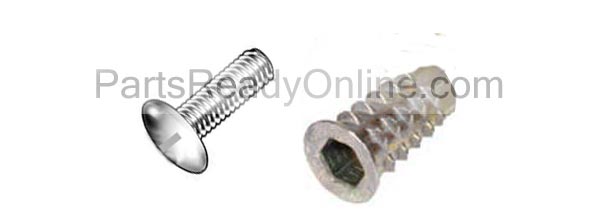FIREmenow
Full time employment: Posting here.
- Joined
- May 9, 2013
- Messages
- 756
My idea was to screw the plate to the underside of the deck. Not to clamp the wood between the plate and the hinge. This would not require removing the foam or vinyl. The hinge do provide essentially a point load that could be the only problem. This distributes the load across a larger area and thru multiple screws into the wood. If the plan is to clamp the wood between the hinge and the plate, then the plate only needs to be slightly larger than the hinge itself. But there is already a problem in this area. This is why I suggested the flush plate.
I hope this makes sense.
I also had a Stingray like the one pictured which I recently sold, so I cant look at it but I thought it had a piano hinge the whole length of the sundeck. So that is a possibility for you to get some more bite on the wood.
Yes, I follow you now. I was thinking the hinges came in through the top, but the photo looks like they attach underneath everything. Here's a sketch of what I think you are proposing - a big plate, screwed in many places (probably best to go the full width of the deck), thick enough to be tapped for the hinge bolts (or weld nuts).
I didn't show the screws, and I guess the upholstery probably wraps around and is stapled to the bottom side of the decking, covering some of this, but that wasn't so easy to detail in a sketch, so that is left to the imagination.
But if the top and bottom of the deck is accessible after peeling back the upholstery (if that is necessary), then a plate top and bottom might be a good option, with countersunk flush bolt heads on top, nuts on the 'inside/bottom'. Hard to say until we can see the detail.
-ERD50
Yes, this is the other solution that I was thinking about... having a plate welded to the hinge that has holes in it to grab the good wood...
I think it was just the wrong application of screw on a large sun deck that is not that light....

+1. Grabbing a bolt rather than a screw on the assembly line would be a likely scenario.
You should be able to find a stainless screw of similar size at most any hardware store. Here's a link to a range of fix possibilities for the stripped-out hole:
Stripped Screw Repair in Wood Applications | DIY House Help
Over the years I have used " Bondoglass " to fill / rebuild rotted wood fiberglass parts on boats and rv's where strength is not real critical. The stuff is polyester resin, with chopped fiblerglass as the filler. ( Regular bondo uses talk power as the filler IIRC ). On the tee nuts, finding some made of stainless steel may be a challange. Maybe McMaster Carr supply ?
I think the easiest solution would be to get SS or brass wood screws as large in diameter as will fit through the hinge and as long as you can given the thickness of the deck material and the hinge... hopefully those will bite into the decking material enough to do the trick. If the hole is rounded out and too loose you can stuff the hole with some folded toothpicks to provide more bite.
Alternatively you could get some fasteners that fit your bolts like the piece on the right in the attached picture and install those into the wood (looks like they install with an hex wrench) and hopefully that should work.

Now this looks like a good option... easier for me to do and if it does not work can go to the large plate on the hinge... as it will not destroy anything that the other option would need...
Will have to get some help in getting the deck off and then it will be much easier to get a look at the holes and also see how much good wood I have...
Edit... what are these called? Was trying to look at them but cannot find them online...
Type-D-Insert-Nut
Everbilt 1/4 in. - 20 tpi x 20 mm Zinc-Plated Steel Type-D Insert Nut (4-Pack)-801884 - The Home Depot
1/4-20 is probably too big for the hinges, but this will get you started. You will need the correct size Allen wrench to screw them in. And the wood will need to be in decent shape to hold these in. Might be 'good enough' though.
-ERD50

Type-D-Insert-Nut
Everbilt 1/4 in. - 20 tpi x 20 mm Zinc-Plated Steel Type-D Insert Nut (4-Pack)-801884 - The Home Depot
1/4-20 is probably too big for the hinges, but this will get you started. You will need the correct size Allen wrench to screw them in. And the wood will need to be in decent shape to hold these in. Might be 'good enough' though.
-ERD50
The bolts are 3/8in... I do not understand what you mean by too big for the hinges.
I think he meant shank diameter. They look like 10-24 from your photo.
Edit... what are these called? Was trying to look at them but cannot find them online...
....Will have to get some help in getting the deck off and then it will be much easier to get a look at the holes and also see how much good wood I have...
Any update?
